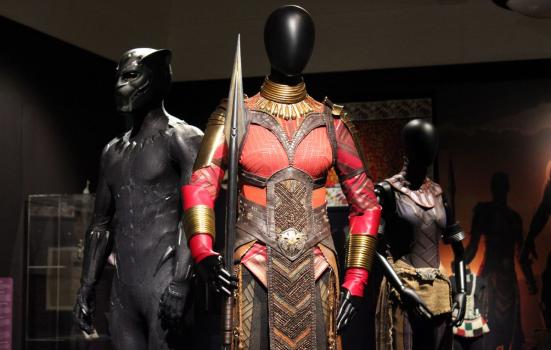As part of our series of articles on widening participation, Elma Glasgow explores why the arts fail to engage ethnically diverse communities in rural areas.

Megan Wilson
Rural arts organisations have always faced barriers to attracting audiences, and with the need to engage more inclusively, that has intensified. However, attracting more ethnic diversity is achievable, as long as you’re prepared to proactively shift practices and attitudes.
Arts Council England’s (ACE) report - Equality, Diversity and the Creative Case 2019/20 - shows that just 11% of audiences were from ethnically diverse backgrounds. The highest number (15%) was in London, with rural areas such as the South West welcoming only 7%.
And In Wales, which is largely rural, 76% of people from ethnic minority backgrounds didn’t participate in the arts, culture or heritage between 2018 and 2019.
People are likely to be deterred by factors including rural racism, irrelevant programming, limited access to suitable transport, expensive ticket prices and cultural barriers.
Power of Stories
In 2021, I founded a Black-led pro-equality organisation, Aspire Black Suffolk, which was born of the highly acclaimed Power of Stories exhibition by Ipswich Museums. The work took place in Ipswich – a wonderfully diverse town – as well as more rural areas in Suffolk, with a goal of appealing to more global majority people.
Power of Stories explored storytelling and identity and featured three original costumes (T’challa, Shuri and Okoye) from Marvel Studios’ Black Panther 1, alongside historic museum objects and local stories. Importantly, it was co-curated with members of the local Black community, comic book experts and allies.
The museum team consciously created a safe space where brave conversations with community curators could be held and where they could tell their stories without fear of judgement. And the museum curators were open to being wrong and subsequently developing new skills to accommodate high quality co-curation.
This was part of the exhibition’s success; the authentic content stirred the emotions – some even said the exhibition had a soul. Power of Stories broke footfall records: 24,000 people visited despite ongoing Covid restrictions, and the audience was the most diverse ever.
Aspire Black Suffolk
Alongside Power of Stories, I ran a Black community engagement initiative which snowballed into Aspire Black Suffolk. Initially as a volunteer, I worked with the community to shape a programme of cultural activities to help improve representation and renew a sense of pride. It also played a key role in driving numbers.
Mainly funded by ACE, Power of Stories and Aspire Black Suffolk were highly praised in the museum sector, winning multiple awards including a Museums + Heritage award (in a shortlist with the V&A, Natural History Museum and Blenheim Palace) and a personal ‘Radical Changemaker’ award from the Museums Association.
Together we created an exceptional experience. Not only did the Black community see themselves represented with elegance and integrity, but their stories were shared in the presence of globally iconic costumes, which themselves come with an emotional and symbolic weight. And it all happened here in ‘little old’ Suffolk.
With Suffolk County Council’s support, I went on to lead a local exhibition tour to enable more rural Black stories to be told, and to reach more people.
Over the last year Power of Stories has visited Moyse’s Hall Museum in Bury St Edmunds, the Food Museum in Stowmarket and Britten Pears Arts which encompasses Snape Maltings Concert Hall and The Red House, a heritage property and museum.
Due to its rural coastal setting, Britten Pears Arts wanted to encourage diverse audiences to Power of Stories. We collaborated on activities and performances appropriate to the audience including grassroots groups and families of African heritage. Aspire also provided D&I staff training to help create a hospitable environment.
Making the changes required for greater diversity
Around 15,000 people saw Power of Stories at Snape Maltings, which was free to visit. Among the crowd were many ethnic community members whose feedback was very positive.
One said, “It was brilliant seeing many faces of colour – the feeling of minorities being included in this particular environment.”. Others reported: “It’s the kind of approach I’m used to seeing in London…” and “…staff and ushers were so welcoming. They played a major role in ensuring the space was welcoming to the community groups.”
Power of Stories was a catalyst for breakthrough work in Suffolk and can be a lesson in best practice for other rural organisations. Here are some suggestions to help rural arts organisations make changes.
• Programming needs to represent our diverse society, without the predictable and offensive stereotypes. Be aware of who you’re booking as global majority people will probably boycott an artist with a racist history.
• Fear of rural racism deters many people of colour from visiting Britain’s countryside. Staff training helps provide visitors with an inclusive environment, where we can just relax, knowing we’re supported.
• New communications tactics are needed to reach greater diversity. Inclusive communications require appropriate and accessible language, authentic stories and representative visual content. But avoid ‘colourwashing’ which gives a superficial and false impression of ethnic representation.
• Listen to criticism from staff and audiences and respond non-defensively. Racism can be subtle and white people won’t always notice it. Being rurally based, knowing how to tackle claims of racism with sensitivity is critical to your reputation. Constant self-accountability can be exhausting so be mindful of everyone’s wellbeing.
• By recruiting more diversely you’re more likely to create an inclusive environment. There are plenty of specialist online job boards and forging new career pathways for young people is a sustainable approach to diverse recruitment.
• Making access and transport to your site cheap and easy is an incentive to new audiences. Talk to local transport companies and negotiate a good deal for your visitors.
Rural arts have much to offer people from all backgrounds and with audience demographics changing – young people expect inclusivity as the norm – it’s very much time to shift to a more inclusive approach.
Elma Glasgow is Founder of Aspire Black Suffolk.
![]() powerofstories.co.uk | aspireblacksuffolk.org.uk | elmaglasgowconsulting.com
powerofstories.co.uk | aspireblacksuffolk.org.uk | elmaglasgowconsulting.com
![]() @ElmaGlasgow | @AspireBlackSuff
@ElmaGlasgow | @AspireBlackSuff




